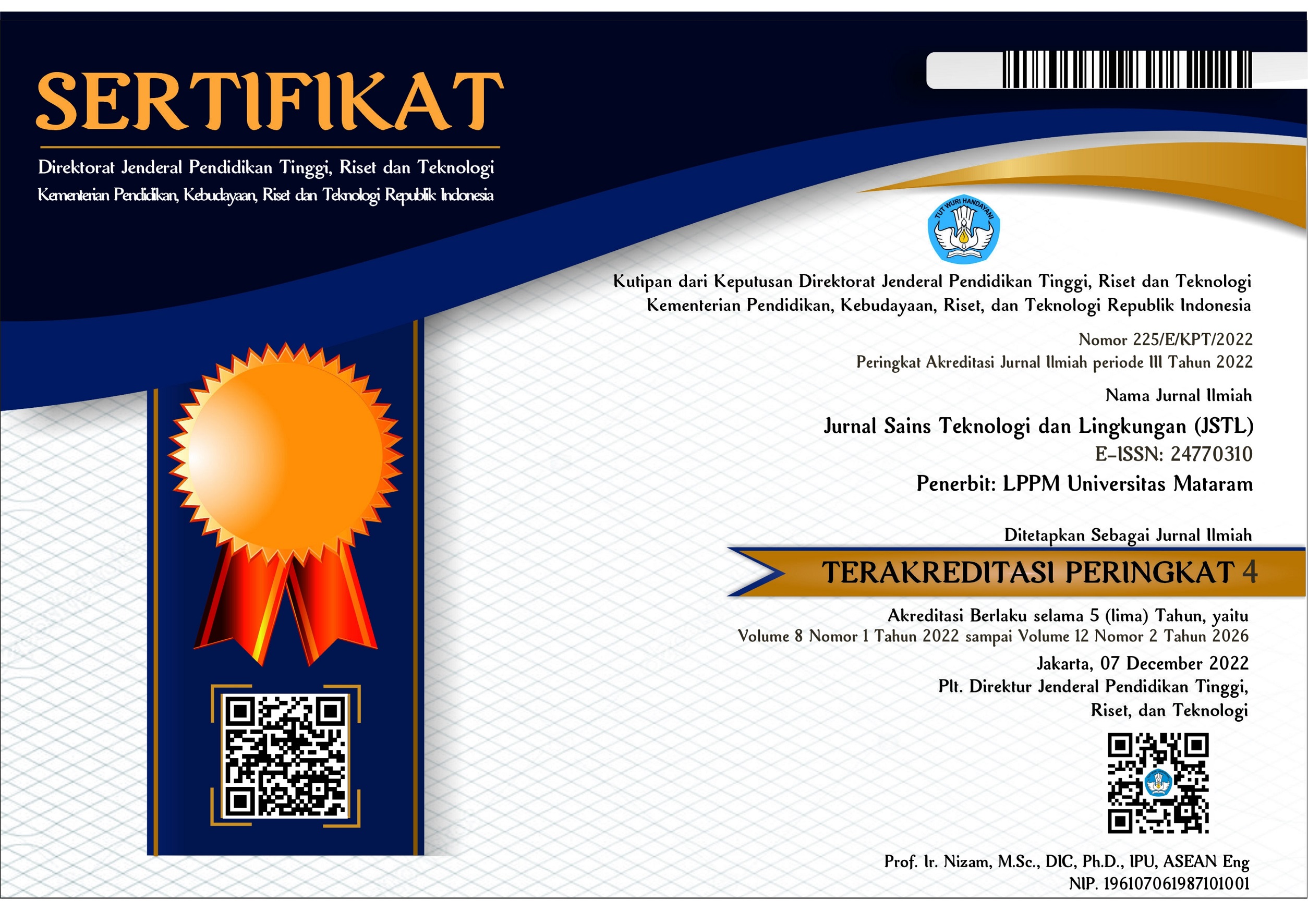Pengaruh Proses N-Hexane Solvent Extraction pada Ekstraksi Bitumen dari Aspal Buton sebagai Bahan Baku Minyak Bumi Nonkonvensional
The Effect Of Solvent N-Hexane Extraction on Bitumen Extraction from Butone Asphalt As A Raw Material af Non-Conventional Natural Oil
DOI:
https://doi.org/10.29303/jstl.v9i1.415Abstract
Buton tar sand or commonly known as asbuton is a natural tar sand deposit found in Buton Island, Southeast Sulawesi. The reserve of asbuton is approximately 179.1 million tons with a hypothetical resource of oil amounting to 10,577,646,000 liters. Asbuton is potentially used as an alternative raw material for non-conventional oil. Non-conventional oil from asbuton could be used as a substitute to the depleted resources of conventional oil in Indonesia. Asbuton non-conventional oil could be prepared by extracted bitumen, a heavy hydrocarbon material in asbuton tar sand from its mineral. The bitumen then could be further processed to produce non-conventional oil. Various studies have been carried out to extract bitumen with various solvents. This study uses direct extraction and soxhlet extraction methods with n-hexane solvent to obtain the most optimum percentage of bitumen. Direct extraction method is done by varying the temperature (40, 45, 50, 55, 60oC) and the weight ratio of asphalt and n-hexane solvent (1:20; 1: 30; 1:40; 1:50). Based on the results of research that has been done, the highest percentage of bitumen yield is formed at 40oC and at a ratio of 1:20 that is 88.60% for the direct extraction method. The 1:40 ratio of soxhlet solvent extraction has the highest bitumen yield of 90.97%. After that, a characteristic analysis was carried out using FTIR with a strong absorbance in the area of 1423.47; 1033.85; 873.75; 709.80 cm-1 representing the C-H and C = H groups.Downloads
Published
2023-03-30
Issue
Section
Articles
License

This work is licensed under a Creative Commons Attribution-NonCommercial-ShareAlike 4.0 International License.


1.png)











